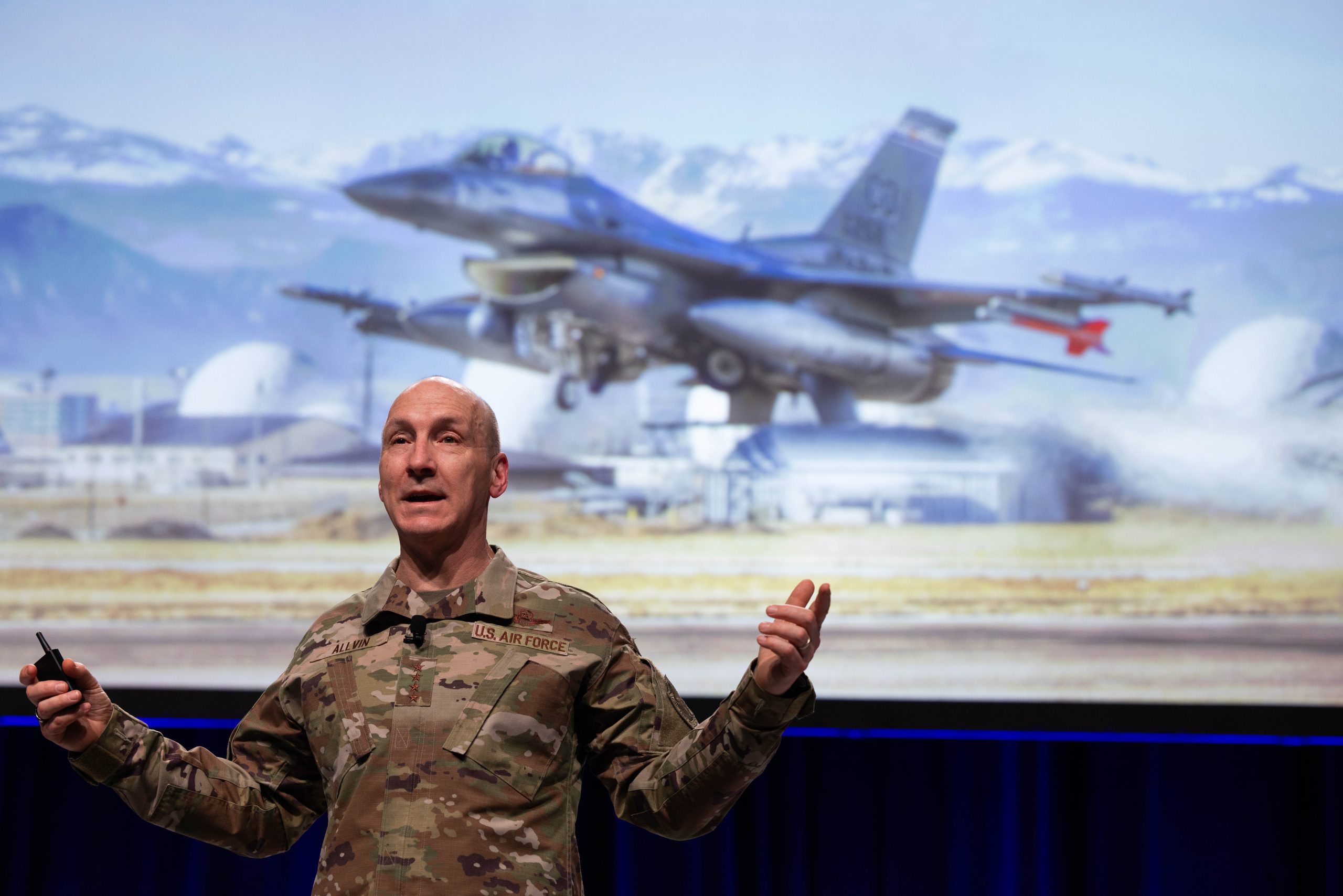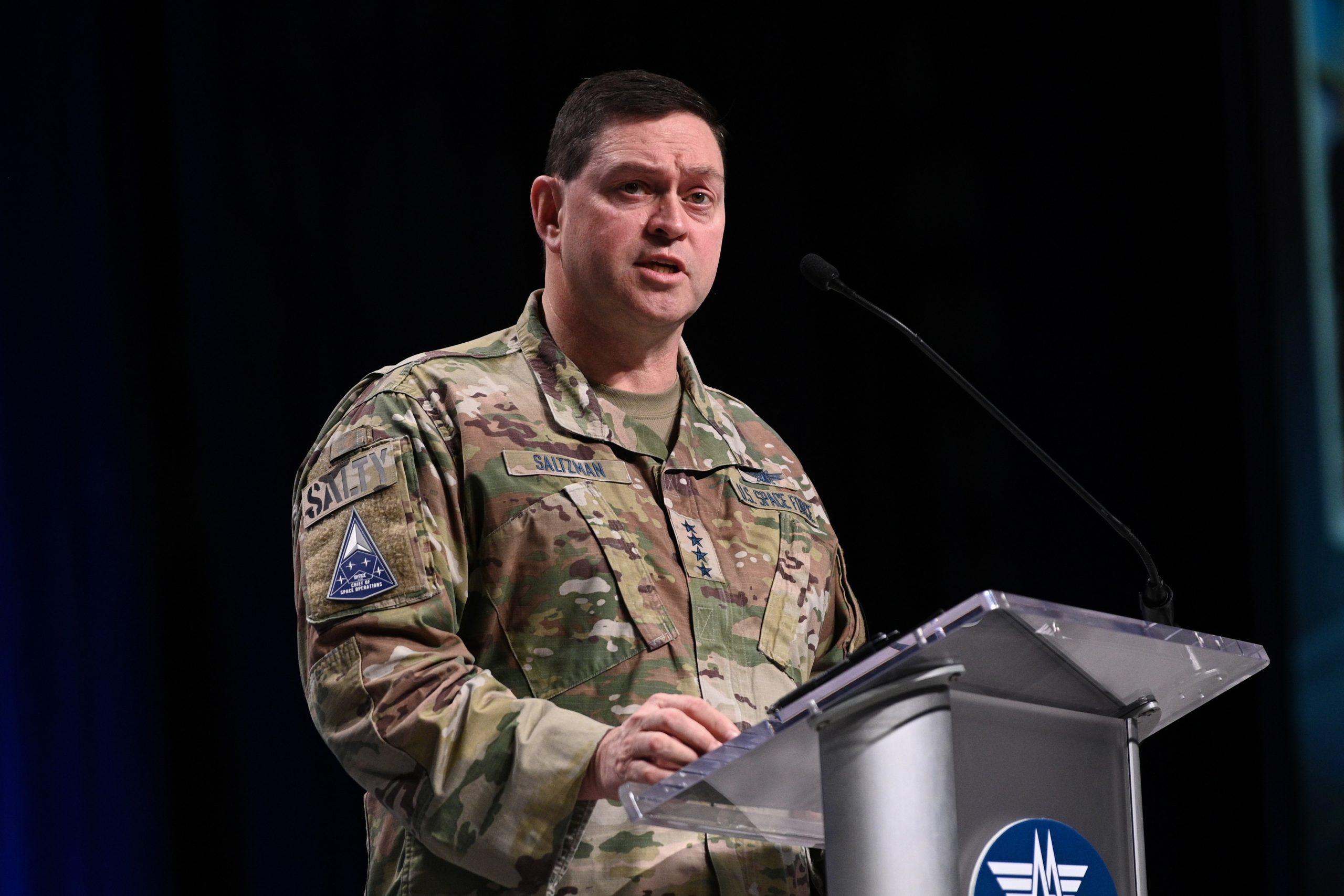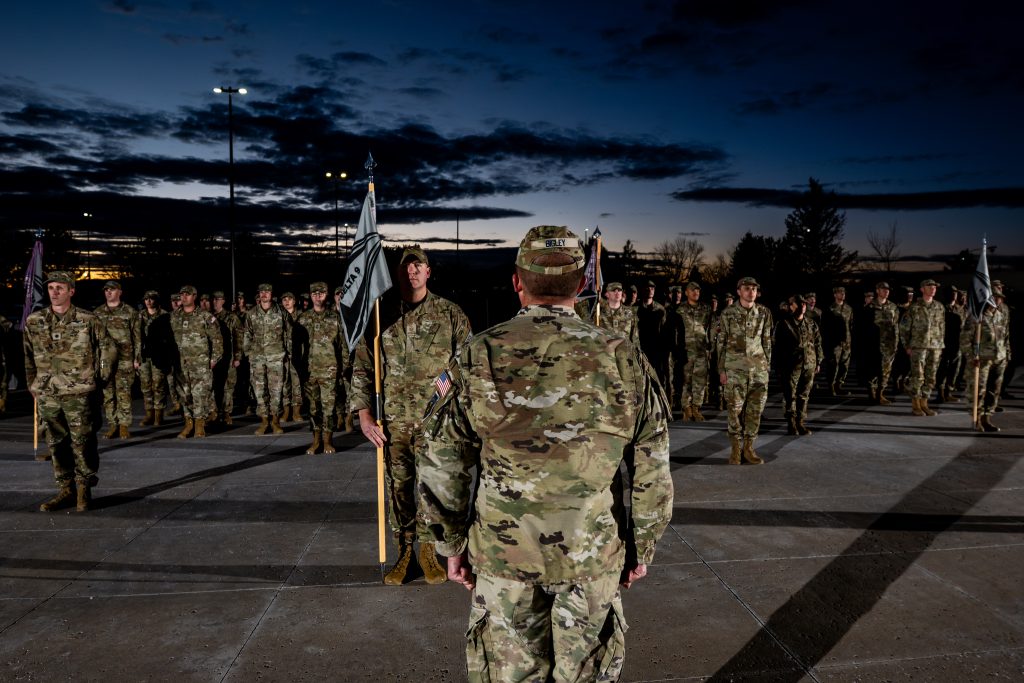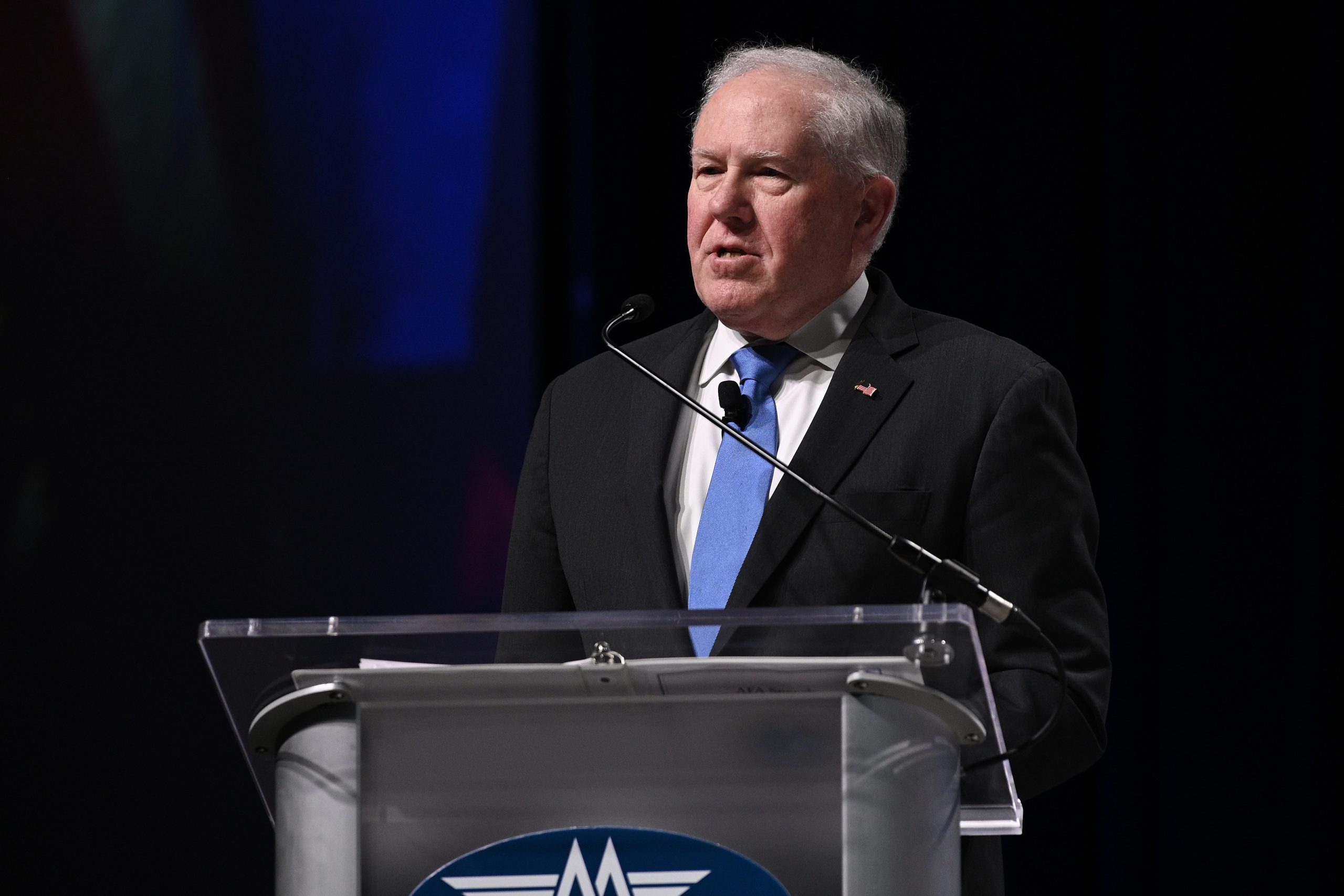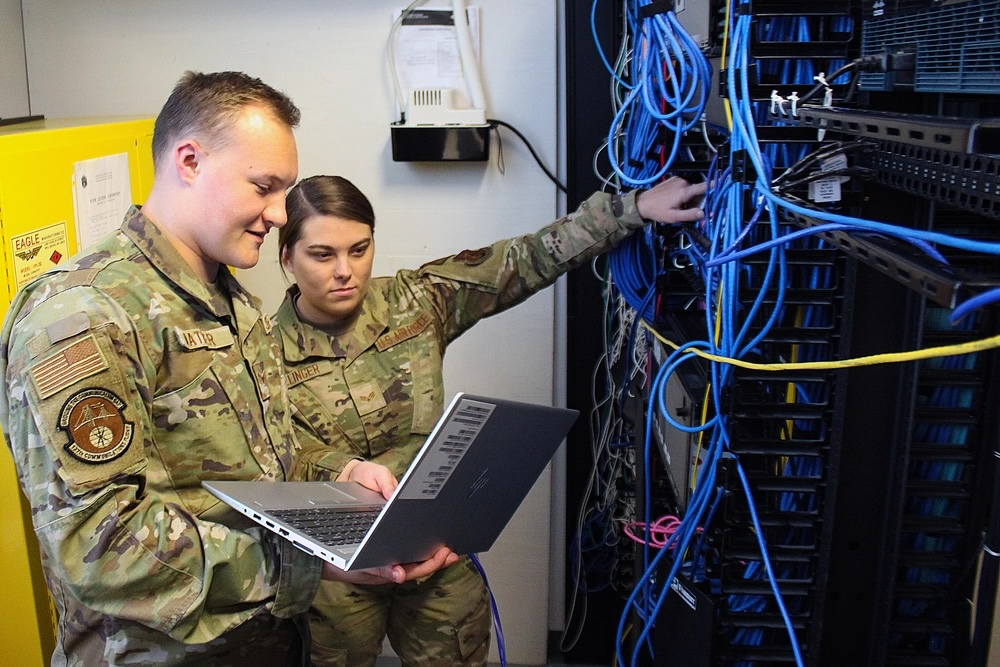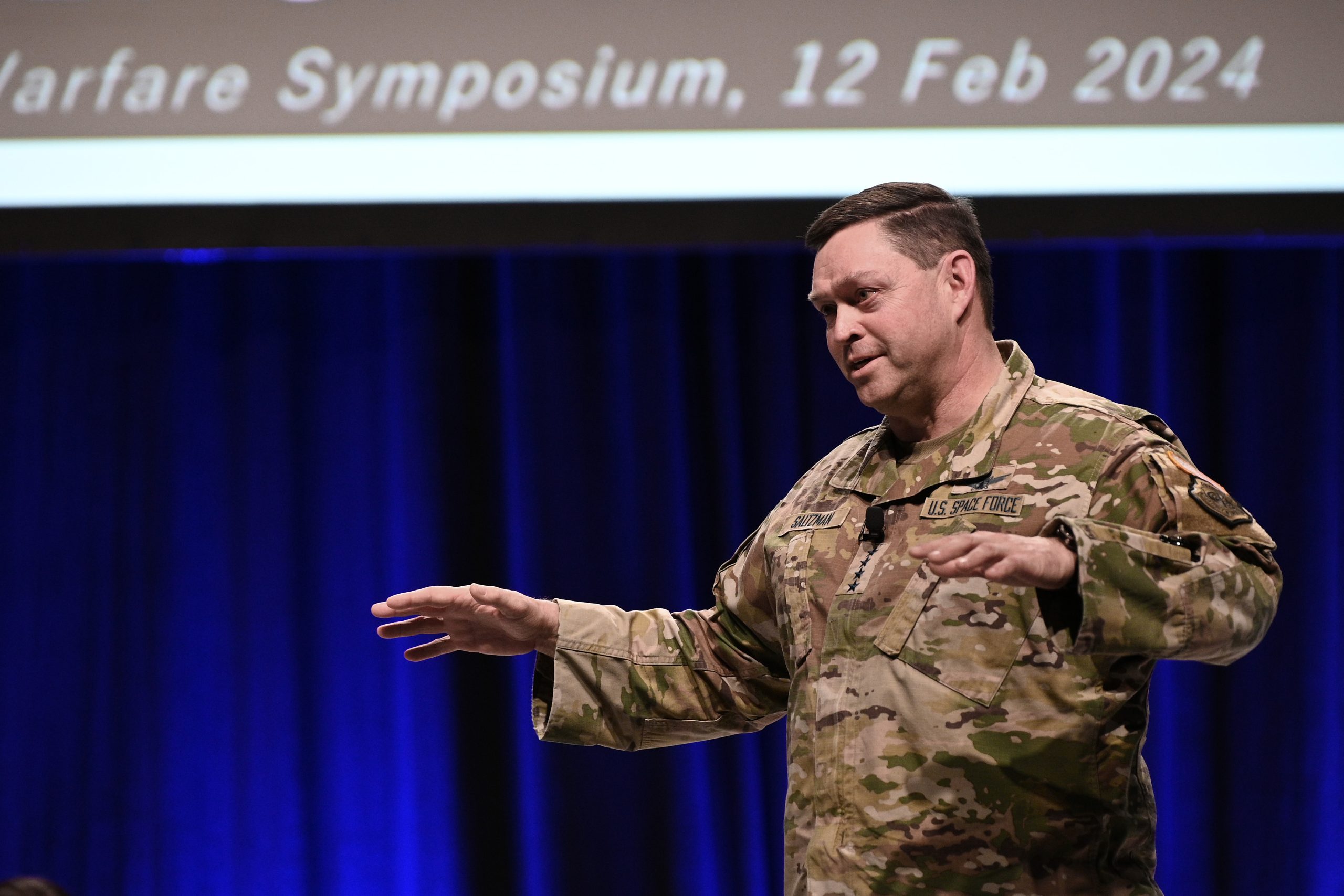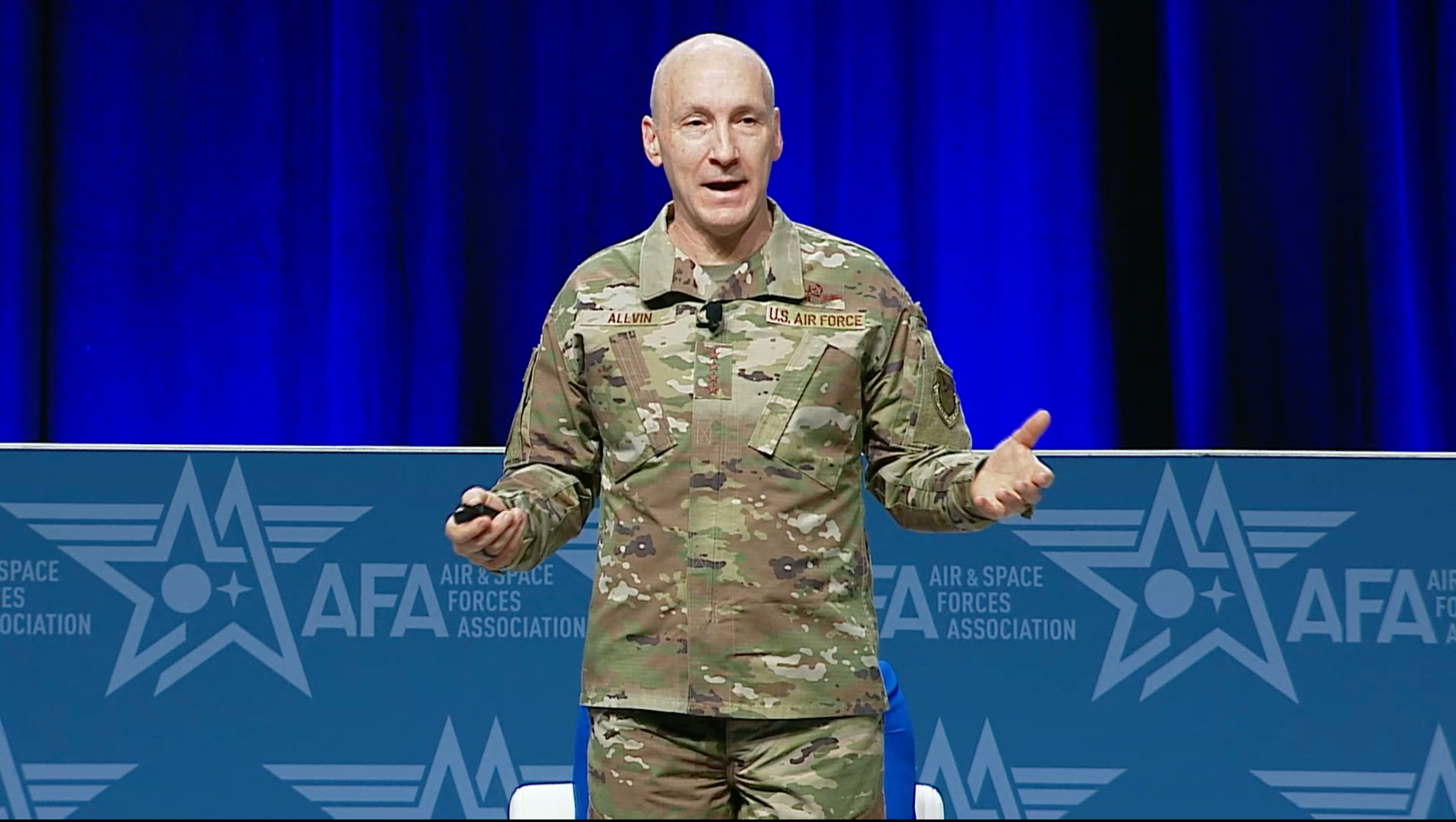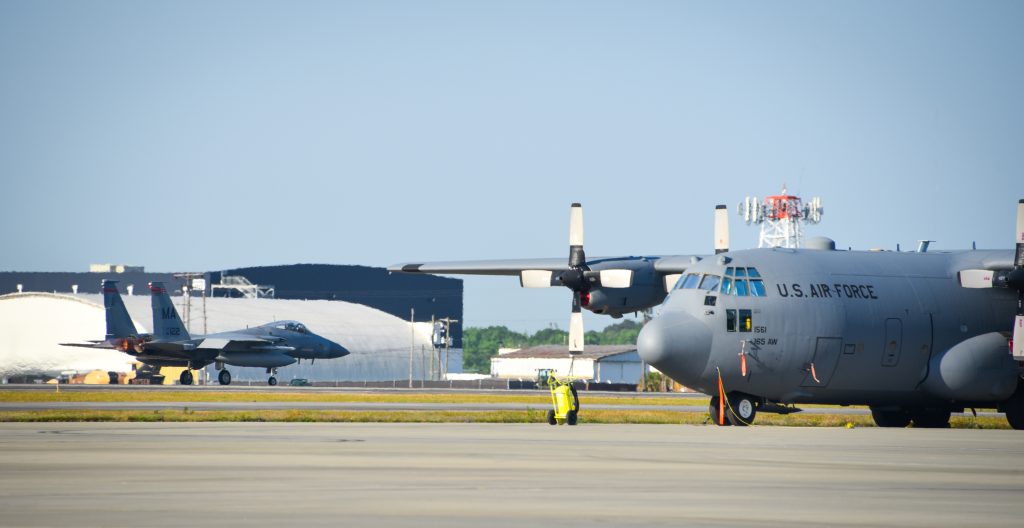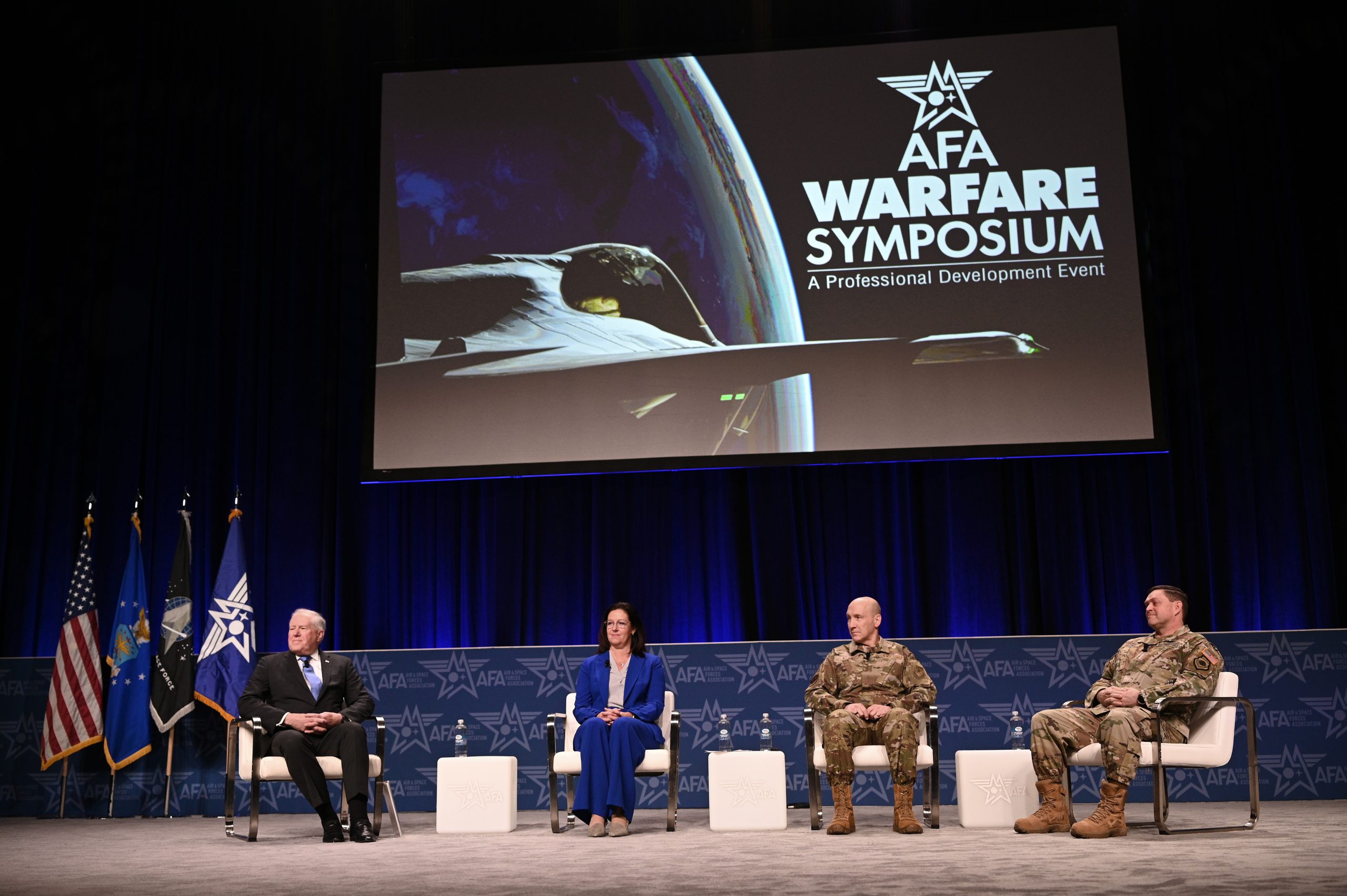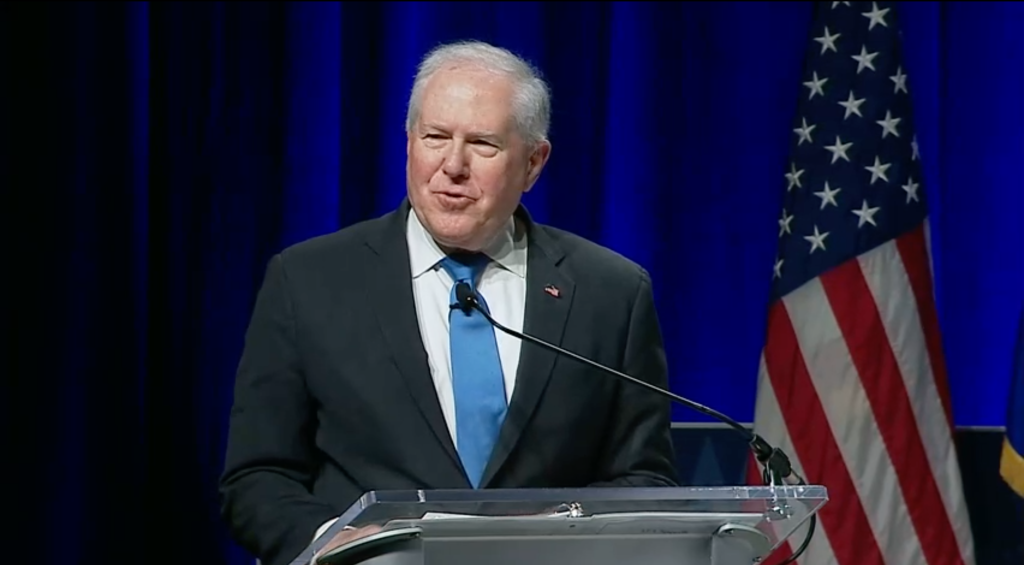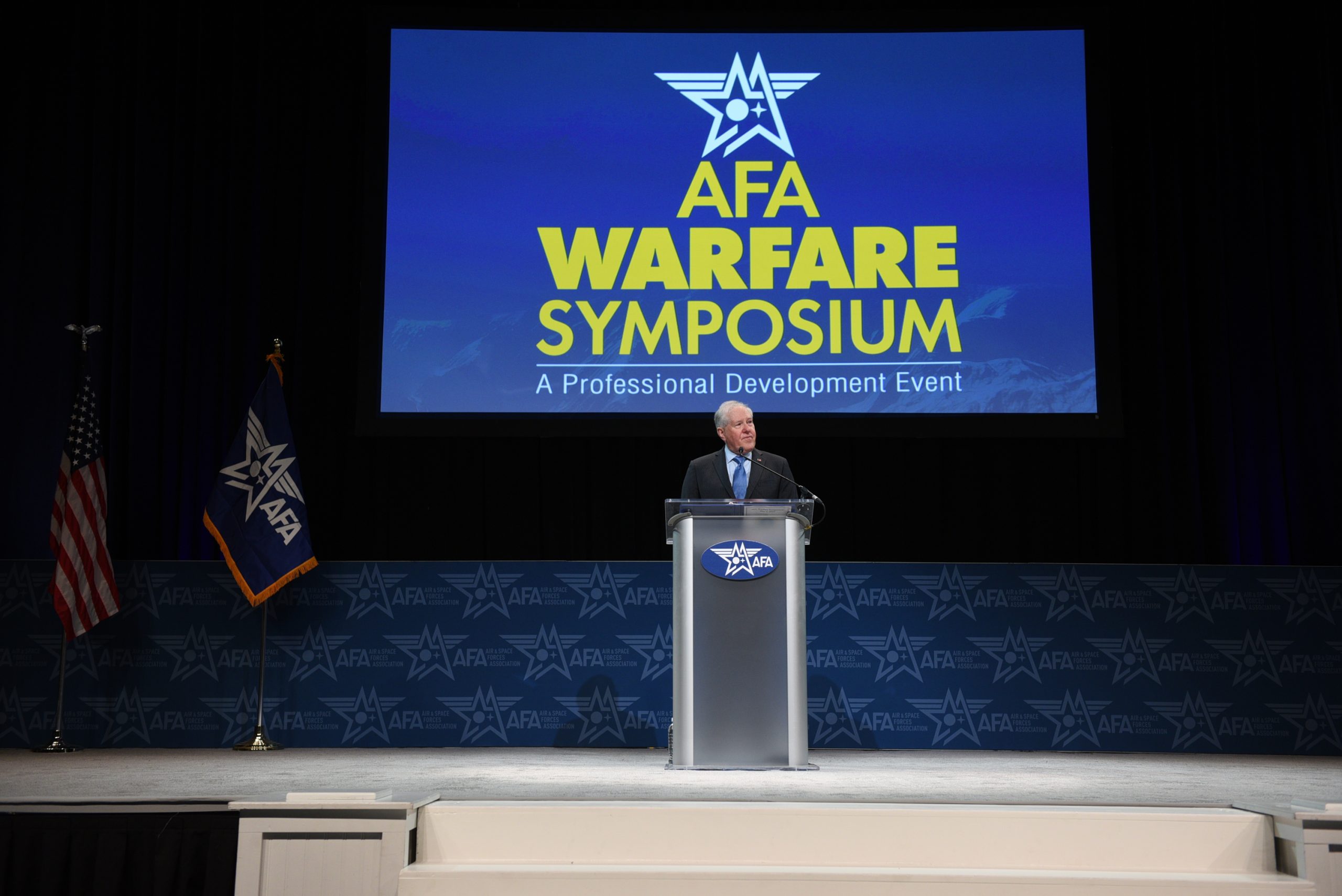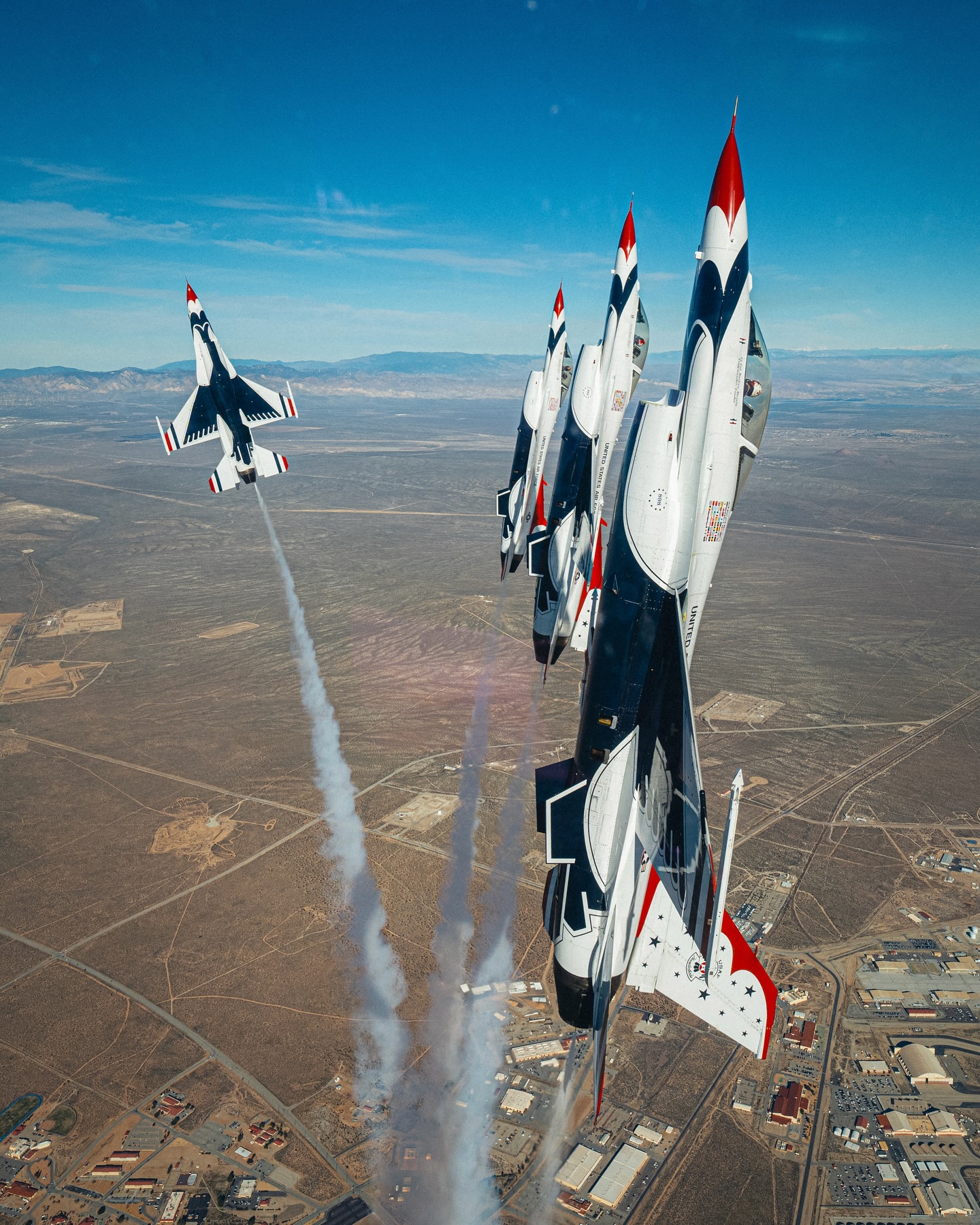AURORA, Colo.—Chief of Staff of the Air Force Gen. David W. Allvin told thousands of Airmen gathered here that the service is facing a hinge in history, less than 24 hours after unveiling the biggest changes to the Air Force in decades.
While the Air Force is introducing new commands, new ranks, and more, Allvin said a deeper, fundamental shift in airpower is occurring worldwide, as drones and other cheap weapons systems proliferate. In turn, the U.S. Air Force must assess how many bedrock concepts fit into modern conflict against China in the Pacific, militia groups in the Middle East, or elsewhere.
“The changing character of war is coming upon us,” Allvin said in his State of the Air Force address at the AFA Warfare Symposium on Feb. 13. “The theater of war is going to require us to fight different.”
Drones and human-machine teaming of unmanned systems will force a rethink of airpower, Allvin said.
“This will be part of the reinvention of our Air Force and airpower into the future,” he said.
The evolving use of unmanned systems is not new. But a conflict based heavily on denied airspace in which no side has air superiority has forced Ukraine into an ugly, artillery-heavy conflict in an attempt to ward off Russia’s full-scale invasion, which is about to enter its third year. The war in Ukraine has also led to new electronic warfare solutions developed on the fly to counter drones and even a new acoustic detection system. And it has been a wake-up call and proving ground for what modern conflict is—with pitfalls and opportunities.
“You’ll see this proliferate more and more, which makes the importance of coming up with a low-cost solution to taking these things down … so we’re not taking $700,000 missiles and shooting down a $5,000 drone,” Gen. James B. Hecker, the commander of U.S. Air Forces in Europe-Air Forces Africa and NATO Allied Air Command, told reporters Feb. 12. “But we want to inflict that cost maybe on our enemy should we be able to deter so I think you’ll see that we’ll be getting some of those capabilities as well.”
The Pentagon and the other parts of the force have taken notice as well—led by younger Airmen, Allvin said.
Airmen are “not ignoring what’s happening underneath our noses right now,” Allvin said. “Some of the changes are being played out in combat. Our Airmen are looking at that. And you can see it in pockets across our Air Force, whether it be in Spark Cells or within our components.”
The Air Force has its Collaborative Combat Aircraft program, meant to produce autonomous drones to pair with manned aircraft. But there are also smaller-scale, bottom-up efforts from Airmen through units such as Air Forces Central’s Task Force 99, which is adapting relatively cheap commercial, off-the-shelf, and 3D-printed drones into what the unit hopes is into useful and evolving operational capabilities.
“They’re looking at what’s happening: the crackling of life that’s happening in the electromagnetic spectrum that had been largely taken for granted; the asymmetric advantage that can happen with low-cost solutions that may not be enduring, but they’re enough to get you an advantage today,” Allvin said.
But rather than replacing airpower, new solutions can enhance the manned platforms the Air Force also has planned—especially as many young Airmen are familiar with rapidly adapting new technology into their existing lives.
“These Airmen are doing all of this,” Allvin said. “And this is why we should be so proud that they’re upholding the legacy of airpower, where we assuring that we will continue to reinvent ourselves into the future, to be the most dominant air force in the world. That’s what our Airmen are doing.”
